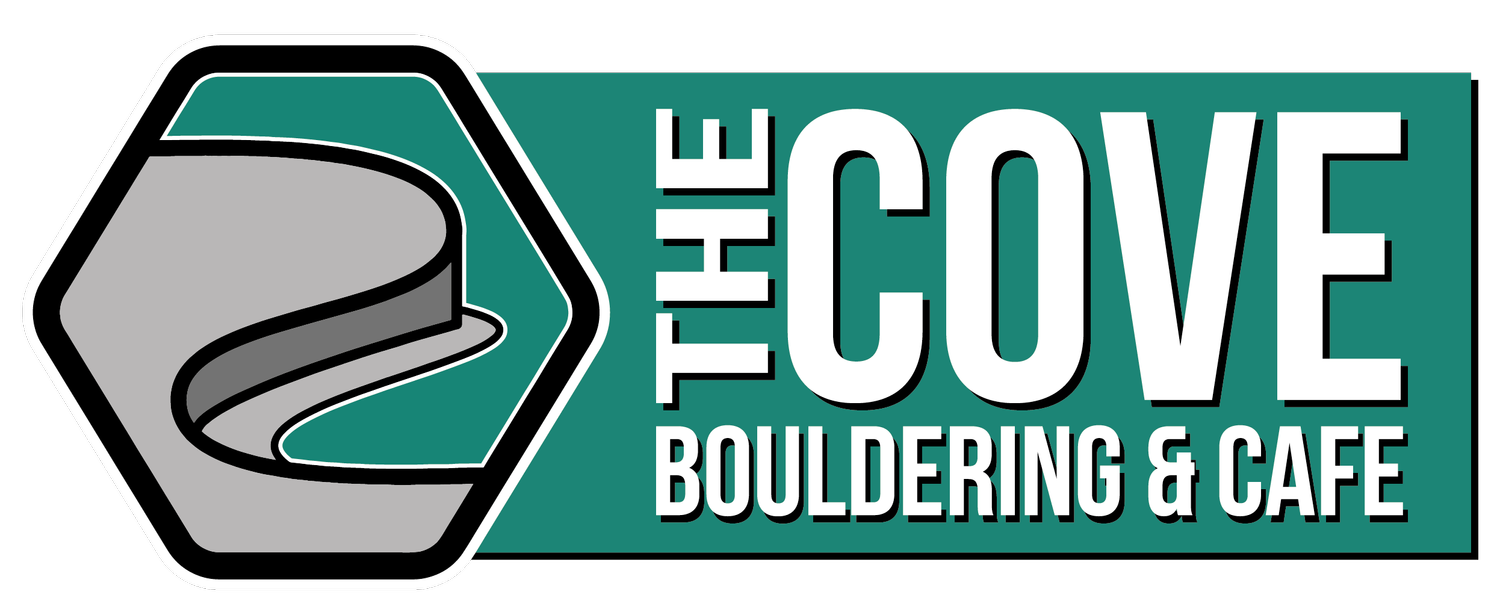Grades & Ascent Rules
Our Grading System
Grades are a tool to help navigate our collection of climbs by identifying a climb’s approximate difficulty level.
The Cove has its own grading system which consists of 6 levels, as seen in the following graphic.
Difficulty in climbing is highly subjective, so it is common for some grading to feel inaccurate. If something feels easier or harder to you, your experience is as/more valid than the assigned grade!
how are grades assigned?
Difficulty ratings are assigned by our experienced setting staff. Our setters consider the R.I.C. scale (Risk, Intensity, Complexity) when determining difficulty.
How often do you change your climbs?
We change our climbs (route set) on Wednesdays. We set on a cycle of 5-weeks-on to 1-week-off setting*. We strip each climb from the wall, pressure wash the rocks/holds, and build brand-new, never-before-seen climbs for our customers. Check out the boulder map to find out what’s changing next.
*we will regularly change our setting schedule to accommodate varying operational/programming needs. Check out the Boulder Map link for detailed scheduling.
ascent rules
-
The grade tag for any given climb will be positioned next to the start hold(s).
-
Two white arrow tags will identify where a climber must start. Both tags will be either on the same hold or on two different holds.
To secure the start position, climbers must use hands on the tagged hold(s) - one hand on each hold if two are tagged.
Climbers are permitted to jump from the ground, kick off the wall, or simply pull into the start position, but the first place the climber’s hands are allowed to be is on the start holds.
Before moving on, the climber must hold the start position in control*.
*Control is being stable without any movement/momentum, or by holding the start hold(s) for 3 full seconds.
-
Zones are mid-way points on select climbs, either used to divide the climb into two sections or to create an alternative, lower finish.
Zone holds are flagged by a single grey tag.
To secure a zone as a mid-way point, you must use* the hold with one hand. To secure a zone as a finish, simply control the hold the same way as described in “finishing a climb”.
*USE means to either achieve/change a stable body position.
-
To finish the climb, the climber must maintain control* of the tagged hold at the end of the climb with both hands.
*Control is being stable without any movement/momentum, or by holding the finish hold for 3 full seconds. -
What is in? (can be used)
Volumes
Bolt holes in holds
What is out? (can’t be used)
Bolt holes in the wall and in volumes
Edges of volumes are the meet the wall
All 3 plexiglass walls
Top edge of all walls
The left-most edge of the climbing terrain in Boulder Bay (main room)
The side-walls in The Narrows (back room)



